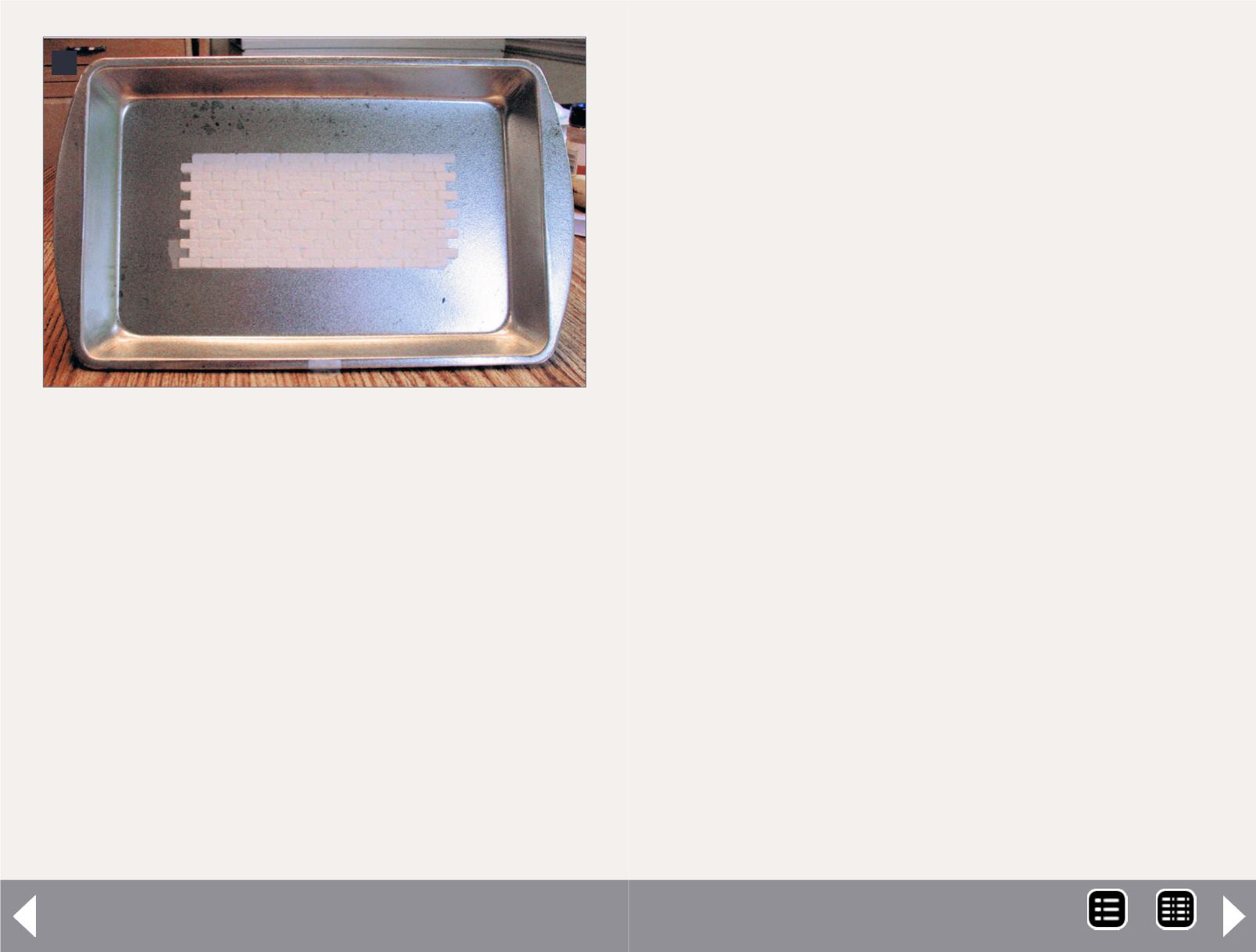
2
2. Master in a water-tight mold box.
wax, vegetable oil, or any universal mold release. I've used cook-
ing spray successfully – just use it sparingly.
You'll want to fix your master to the bottom of the mold box
(2). A section of cut-stone wall used as a master is stuck to the
bottom of a baking pan being used as a mold box. To make
efficient use of the ComposiMold, try to make the mold box
fit more closely to the master than in this example. A tighter-
fitting mold box allows you to use the minimum amount of
ComposiMold or, alternately, to increase the depth and there-
fore the strength of the mold. Allow ½” room around the mas-
ter on all dimensions.
Seal the master
Remember, ComposiMold pours on as a liquid, and a rather
dense one at that. Therefore, any master that can float, will
float; including some plastics. Masters made of porous mate-
rial (wood, plaster, etc.) must be sealed beforehand with sand-
ing sealer or paint. Keep in mind that the rubber will be at about
130
o
F as it pours, so your master must be able to withstand that
heat, and so must the glue holding it to the bottom. Polymer clay
is a versatile method for attaching the master to the mold box.
Hot glue works well and can usually be broken free from a non-
porous master and the metal of the pan after the mold has been
removed, thereby preserving the master.
Here's a trick that I discovered quite by accident. If your master
begins to float away, immediately push it down with a couple
of Popsicle sticks. A thin layer of ComposiMold will be caught
between the master and the mold box. It will quickly cool and
solidify, thereby holding the master to the bottom.
Once you have your master affixed to the mold box, apply the
mold release. In this case I used cooking spray. Now begin to
melt the ComposiMold in the microwave with the jar cover
off. There is a table of melting times on each jar of the mate-
rial – don't believe it. My microwave, which admittedly is a
very powerful one, melted the ComposiMold much more rap-
idly than the label indicated. Start with one minute and stir the
ComposiMold with a Popsicle stick.
If it still has some lumps in it, put it back in for no more than
another minute. 30 seconds would be better. Remove and
stir again. Stir gently so as to introduce the minimum num-
ber of bubbles into the mix. Repeat this process until the
ComposiMold is the consistency of heavy syrup. At that point
it's ready to pour. ComposiMold's instructions warn not to
let the product get to 200
o
F as overheating will eventually
degrade the ComposiMold.
Easiest way to make molds - 3
MRH-Jan 2014


